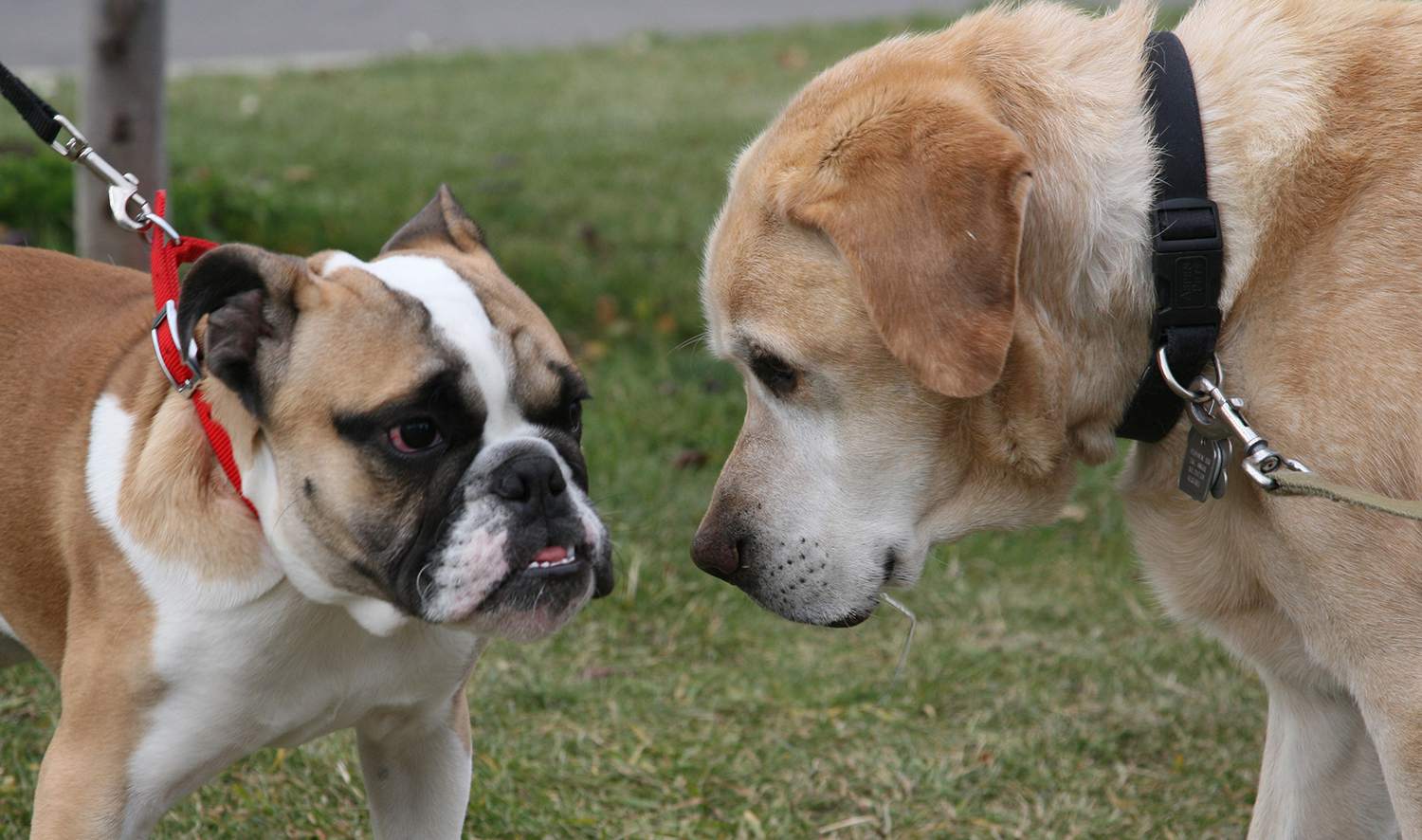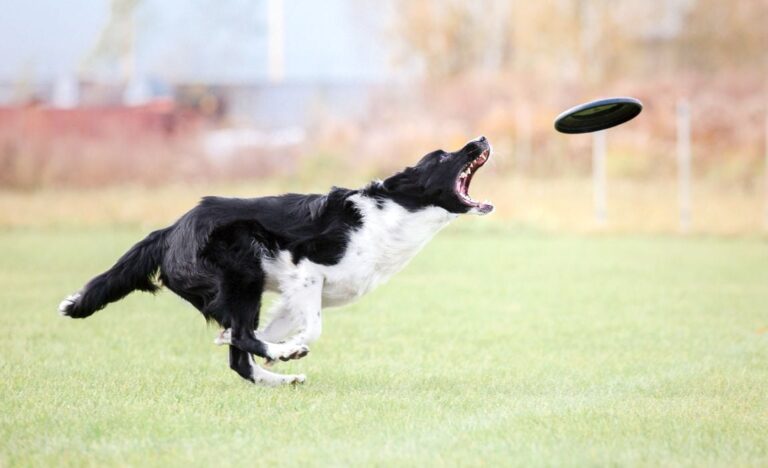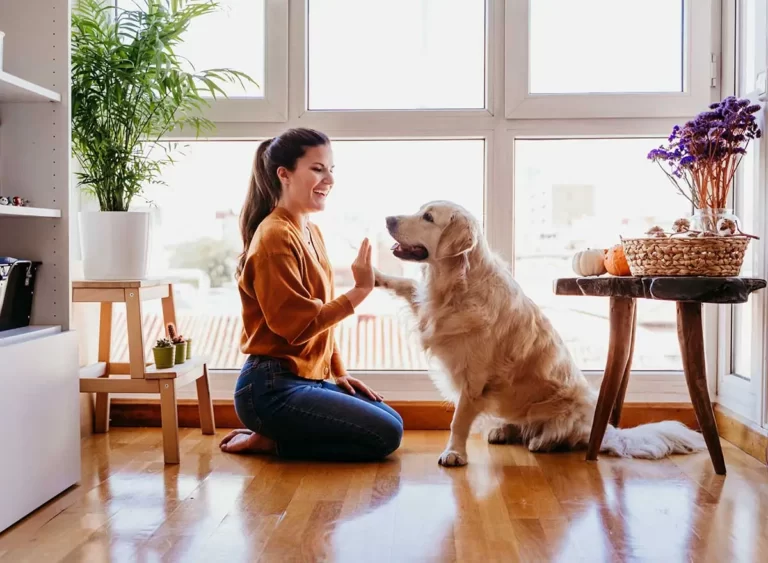Everything You Need to Know About Introducing a New Dog to Your Current Dog
Introducing a new dog to your current canine can be a big task for many people. Potential problems like jealousy, aggressiveness, and much more could erupt between the two dogs depending on how well you prepare. So let’s break it down into simple steps that make things easier for you when you add another canine to your household.
Here’s everything you need to know about introducing a new dog to your current dog, whether you’re bringing home a new family member or have adopted over the internet without meeting them first. Our aim at Your Canine Needs is to make the transition as smooth as possible for both dogs.
How to Introduce A New Dog to Your Existing Dog

Introducing a new puppy to your current dog is a process that can take time and patience. Here’s how to make it easier for everyone.
Go slow. Take your time with the introduction, especially if introducing a puppy to an adult dog. It would be best to separate each dog in the first few days in adjoining rooms or on opposite sides of a closed door. Give them time to get used to their new surroundings, even if it means separating them.
Create opportunities for the dogs to interact with each other under supervision. This will allow them to be familiar with each other’s scents and sounds without getting overwhelmed by too much physical contact too soon. This also prevents accidental bites or scratches during the initial dog meeting.
Try to have more than one person handling both dogs at this stage of the introduction process. It is best to have two handlers as it’s easier for both dogs to focus on one person at a time rather than being distracted by what others are doing while getting comfortable with each other.
Keep it positive! Reward good behavior with treats or toys so that your dogs associate each other with something positive instead of seeing.
How to break up a dog fight
It’s essential to know how to break up a dogfight. If you see two dogs fighting, your first instinct will be to rush in and separate them. While this may be necessary for some situations, you must take precautions before you jump in.
If the dogs are fighting over food or toys, separating them can be as simple as taking away their toys or food bowl. If they are fighting over territory, try moving them into separate rooms. If they are barking at each other through an open window or door, close it and wait for them to stop fighting before you reopen it.
If your dog attacks the other, try distracting him by offering him something he likes to play with or chew. You can also toss a blanket over both dogs until they stop moving around so much, making it easier to separate them without getting injured.
If one of the dogs starts bleeding after being attacked (usually when one has been bitten), apply pressure directly onto the wound using whatever material is available (such as a shirt or towel). This will help stop some of the dog fights.
How New Dogs and Puppies Should Start Their First Day
The first day at a new home can be daunting for you and your puppy. Here’s how to make the transition easier.
Introduce your puppy to his new digs as soon as you get home from the shelter or breeder. This will help him feel more comfortable in his new surroundings when your dog is tired, hungry, and stressed out by all the commotion associated with moving.
Take him outside frequently so he can relieve himself and get used to his new neighborhood’s sights, sounds, and smells. If he has an accident indoors, don’t punish him — clean it up immediately (and adequately dispose of it).
If possible, keep him in his crate when you’re not at home until he gets used to his surroundings and house rules (puppies should never be left unsupervised). That way, there won’t be any accidents on your expensive rug!
After your dog relieves himself outside, take him back inside and give him a drink of fresh water, so he doesn’t become dehydrated before bedtime. Then put him in his crate with some toys or treats so he won’t feel lonely while you’re gone during the day.
Why It Takes Time for Dogs to Get Along
Dogs can be very territorial, especially if they have been together for a long time. Introducing a new dog into the home requires patience and understanding.
Some dogs may not get along with other dogs immediately, but giving them time to get used to each other is essential. Sometimes, it can take days or weeks for a pup to become comfortable in its new home. Other dogs may need months or even years before they feel at ease around other dogs.
If you bring home two puppies simultaneously, it may take a while for them to bond with each other and learn proper socialization skills. The same can be valid for adult dogs who were raised separately from one another and then brought together later in life.
Dogs often act out when stressed or uncomfortable around another animal or person, especially when feeling territorial or possessive over food or their bedding area. If your pet is acting out toward another dog because he feels threatened by him, start by keeping them separated until they become more comfortable with each other’s presence and start acting normal again (i.e., stop growling). Then gradually introduce them again under controlled circumstances.
Why You Should Never Leave Two Dogs Unsupervised At First
Dogs can be wonderful companions, but they’re also animals and need to be trained and socialized. This is especially true if you have two dogs yet to be introduced appropriately.
There are many reasons why you should never leave two dogs unsupervised at first. Here are some of the most common:
They may fight over territory or food. It’s instinctive for dogs to share their part, but if they don’t know each other, there’s a chance that one dog could see another as an intruder.
The new dog might be afraid of the resident dog and try to run away from it. The resident dog may feel threatened by the newcomer and try to chase him out or even attack him if he runs away from his home base. In either case, this could lead to severe dog injuries and possible property damage.
The two dogs may bond with each other instead of bonding with you — especially if they’ve been left unsupervised at first. If they become connected instead of with you, they might not listen to your commands when you want them to stop doing something dangerous like chasing cars or fighting with other animals in the neighborhood.
When introducing dogs, it’s essential to consider the personalities of each dog. If you have a dominant dog, always take precautions to ensure that a less dominant dog is not threatened or hurt.
In general, here are some tips for introducing dogs:
1. Make sure both dogs are vaccinated and healthy before introducing them.
2. Have your veterinarian examine both dogs if they haven’t been seen in the past year or so.
3. Make sure all family members know how to interact with both dogs and understand their temperaments appropriately.
4. Don’t assume that because your dog gets along well with other animals, he’ll automatically get along with yours.
5. Introduce new pets slowly; you should only leave them alone after they are familiar with each other in the same environment.
Introducing A Small Dog To A Big One
If you have a small dog, you may be wondering how to introduce your dog to a big dog. First, make sure that the dogs are supervised at all times. Please make sure there are no doors or gates between them. If you have an outdoor yard, wait to let the big dog outside by himself until he’s had some time with the small dog. Keep them in separate rooms until they seem comfortable with each other.
Dogs can smell fear, so your dog mustn’t show any signs of being afraid when you introduce him to another dog. If your small dog is nervous around larger dogs, bring him into his crate or kennel for safety until he feels more comfortable around them. Don’t force him into an interaction if he doesn’t want one yet – this could lead to aggression problems later on down the road!
Exercise the dogs before introducing them to each other, so there is little pent-up energy between them. Give them treats as rewards when they interact well with one another, and praise them when they’re doing something good!
Dealing with dogs of varying ages or energy levels
If you have a new dog, you might wonder how your dog will get along with the older family members. If you have an older dog, you might be worried about how to keep them safe around the new arrival.
Dealing With Dogs of Varying Ages
There are no set rules on how to introduce dogs to one another. Some dogs get along right away, while others may never become friends. It is always necessary to remember that there is no guarantee that two dogs will ever get along well — even if they’ve been raised together from puppies — but the odds are better when you introduce them properly.
If you’re introducing a new puppy into a household with an older dog, only allow them unsupervised time together once you know they can get along peacefully. Keep them separated in different rooms or on opposite sides of a door until they are comfortable around each other and don’t feel threatened by each other’s presence.
If one dog is much larger than the other (such as when adopting an adult rescue dog into a home with children), keep them separated until both dogs have had time to adjust and learn their new roles in the household.
You avoid jealousy when your current dog has been only a pet for a while.
Your current dog has been an only pet for a while, and you want to add a new one, but you’re worried about jealousy. Can you avoid it? Yes, but there’s no way to guarantee that your current dog will feel safe from the new arrival.
The best way to avoid jealousy is to ensure your new dog socializes correctly before joining the family. Socialization helps dogs learn how to interact with other animals positively. When dogs are introduced after being properly socialized, it reduces their stress and helps them better adjust to the new situation.
If you’re adding a puppy, start socializing him as soon as possible. Puppies are more easily socialized at this age than older dogs because they have fewer established habits and behaviors that might get in the way of learning new things. Early exposure to lots of people, places, and other animals will help ensure your dog grows up to be a well-adjusted adult dog who gets along well with everyone he meets — including his family members.
You first must familiarize your dog with the idea of a new friend in the house. You’re not forcing him to share his toys or anything; just introducing him to the picture of another dog in his space.
Start by putting the two dogs together in a room with some tasty treats, like rawhides or peanut butter-filled Kongs. Allow them to sniff each other through a gate or door, but don’t force them to interact if they seem nervous or afraid. You want this experience to be positive!
If both dogs seem comfortable with each other, try letting them sniff each other through a gate for 5 minutes at a time until they’re comfortable enough that they can eat treats while being so close together. As soon as they start getting comfortable, they’ll begin to play together!
I recommend using an interactive toy to motivate them to play while a gate or door separates them.
Once they’re comfortable with each other, let them have supervised play time together (5-10 minutes at first) and gradually increase their time together over several weeks until they’re spending whole days together without any problems.
Conclusion
Whether you’re considering adopting a new dog or already have one, the most important thing to remember is that introducing the two will take a lot of work. It will take time and patience, but it’s well worth the effort. Remember to love and treat your dogs equally, and let your new one get comfortable in his environment before rushing things. As long as you set things up correctly, you should be able to enjoy both dogs for years and years to come together in harmony.







